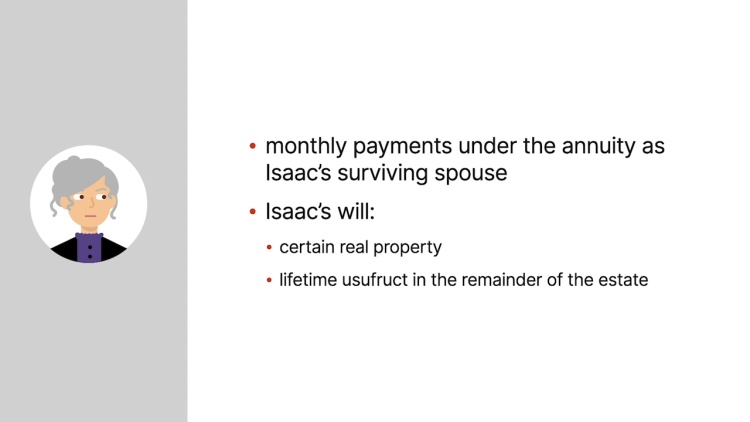Boggs v. Boggs
United States Supreme Court
520 U.S. 833 (1997)
- Written by Maggy Gregory, JD
Facts
For 36 years, Isaac Boggs worked for South Central Bell (SCB) in Louisiana and earned pension benefits. During this time, Isaac was married to his first wife, Dorothy, with whom he had three sons (defendants). When Dorothy died, Isaac married Sandra Boggs (plaintiff), to whom he remained married until his retirement and subsequent death. Upon his retirement, Isaac received a lump-sum amount from the SCB Savings Plan, which Isaac rolled over into an individual-retirement account (IRA). Additionally, Isaac owned stock from the SCB Employee Stock Ownership Plan (ESOP) and received a monthly annuity from the retirement program. Because Louisiana was a community-property state, Dorothy bequeathed her interest in Isaac’s retirement benefits to their three sons upon her death. After Isaac died, his sons and Sandra disagreed on the proper distribution of assets and money from Isaac’s retirement accounts. Two of Isaac’s sons filed suit in state court, requesting a judgment awarding the sons a percentage of Isaac’s IRA, ESOP stock, and monthly annuity payments. Sandra filed suit in district court, seeking a declaratory judgment that the federal Employee Retirement Income Security Act of 1974 (ERISA), 29 U.S.C. § 1001 et seq., preempted the application of Louisiana’s community property and succession laws to the extent that the laws recognized the sons’ claims to an interest in the disputed retirement benefits. The district court granted summary judgment for the sons, concluding that Dorothy had an ownership interest in Isaac’s pension-plan benefits and that the sons had acquired this interest by operation of community property law. Additionally, the district court found that Dorothy’s testamentary transfer of interest to the sons was effective. Sandra appealed. The court of appeals affirmed. The United States Supreme Court granted certiorari.
Rule of Law
Issue
Holding and Reasoning (Kennedy, J.)
Dissent (Breyer, J.)
What to do next…
Here's why 899,000 law students have relied on our case briefs:
- Written by law professors and practitioners, not other law students. 47,000 briefs, keyed to 994 casebooks. Top-notch customer support.
- The right amount of information, includes the facts, issues, rule of law, holding and reasoning, and any concurrences and dissents.
- Access in your classes, works on your mobile and tablet. Massive library of related video lessons and high quality multiple-choice questions.
- Easy to use, uniform format for every case brief. Written in plain English, not in legalese. Our briefs summarize and simplify; they don’t just repeat the court’s language.





